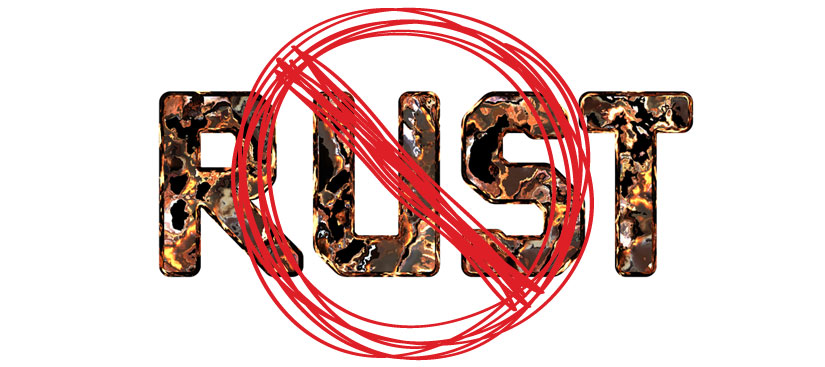Rust Prevention Tips
Are you using a rust prevention solution like Cosmoline, but still having problems with rust?
In this article we cover the most common causes of rust and how to stop rust from forming in the future.

The most common causes of rust formation are:
Dirty Parts
While there are many things that can cause parts to rust, the most common and preventable issue is dirt. Metal fines, dust, shop dirt, oils, processing chemicals and cleaner residue can all affect how your rust preventative works. Dirt particles typically begin as very small areas of rust located sporadically on the metal surface. As the rust penetrates the metal surface, the surface will become pitted and discolored.
How to Stop Rust:
- Clean parts thoroughly
- Add a clean and rinse stage before adding any rust inhibitor
- Monitor cleaning, rinsing and rust prevention application tanks for dirt load
Wet Parts
If metal parts are wet from fluid, humidity or water contamination, this can cause parts to rust.
Rust may also form if competitive inhibitors are used, creating streaky corrosion that shows up as an irregular, wavy pattern caused by the incompatibility of the two fluids mixing on the same surface. Below we've included some advice on how to stop rust caused by wet parts.- Clean and dry parts thoroughly
- Use a water-displacing and separating rust inhibitor with agitation.
- Use false-bottom tank and drain water as required.
- Use a rust inhibitor with adequate film strength.
Rust Preventive Abuse
Over time your rust preventative will become less effective. This can be caused by a number of factors including:
- Low Concentration
- Low pH
- High Water Hardness
- Poor Agitation
- High Dirt Load
- Biological Activity
- High Dirt Load
- Excessive Water Contamination
- Water Displacement/Separation Failure
- Poor Copper Corrosion Inhibition
- Higher or Lower Solids Content than is standard
Solutions:
- Monitor the rust inhibitor for the parameters above
- Practice fluid maintenance
- Establish dump and recharge cycles that are proactive
Pre-Existing Rust
Pre-existing rust can create problems if it is not removed before adding a rust inhibitor. After parts are coated and stored, or shipped, rust blooms.
Sources of pre-existing rust can include:
- Microscopic Rust on Incoming Material
- Microscopic Rust Initiated in previous metalworking processes
Rust Prevention Solutions:
- Establish quality specs. on receivables.
- Practice in-process corrosion inhibition throughout the manufacturing process.
Improper Packaging
If parts are packaged before the inhibitor or water has evaporated or excessive handling occurs after the inhibitor is added, it can make the inhibitor less effective, resulting in rust formation.
Here are tips to keep this from occurring:
- Use industrial grade fans to expedite removal of solvent.
- Use water soluble products at elevated temperatures.
- Orient parts for drainage
- Use vented containers
- Avoid excessive handling
Improper Application
If a rust inhibitor is not applied properly, rust protection may not be adequate, resulting in rust formation. This can happen if the coating is not given sufficient time to dry or if the coating was not applied to the entire surface evenly.
Solutions
- Allow sufficient time for rust inhibitor to thoroughly wet part surfaces and displace any water (15-30 seconds)
- Avoid brush or paint type applications. Use dip or spray whenever possible.
Improper Product
Current product requirements may be drastically different from time of initial product recommendation. Technological advances in the product chemistry may have outdated your current product.
Solution:
Periodically review:- Type of metal
- Length of protection
- Type of storage
- Type of chemistry
- Prior Processes
- Condition of Parts (wet/dry)
- Desired film
- Plant environment
Dissimilar Metals
Two or more metals in contract on the same part may initiate a galvanic (electrochemical) cell if conditions allow. This may occur in parts washer cleaning dissimilar metals, or where vibratory media uses an aluminum substrate.
Solution:
- Avoid the use of dissimilar metals in part design.
- Watch porous metal and deburring operations
- If unavoidable, immediately apply a rust preventive that will protect both metals.
